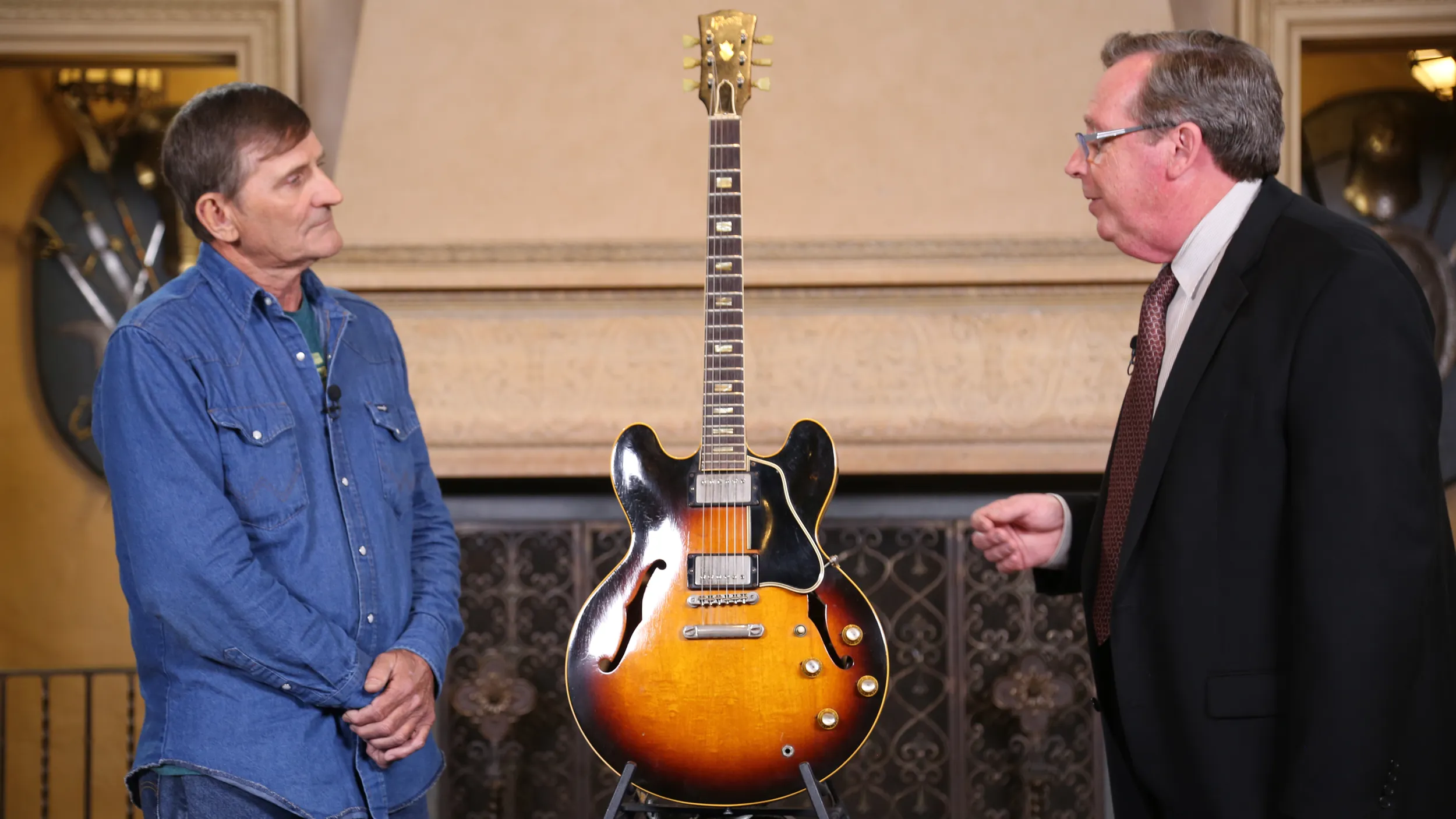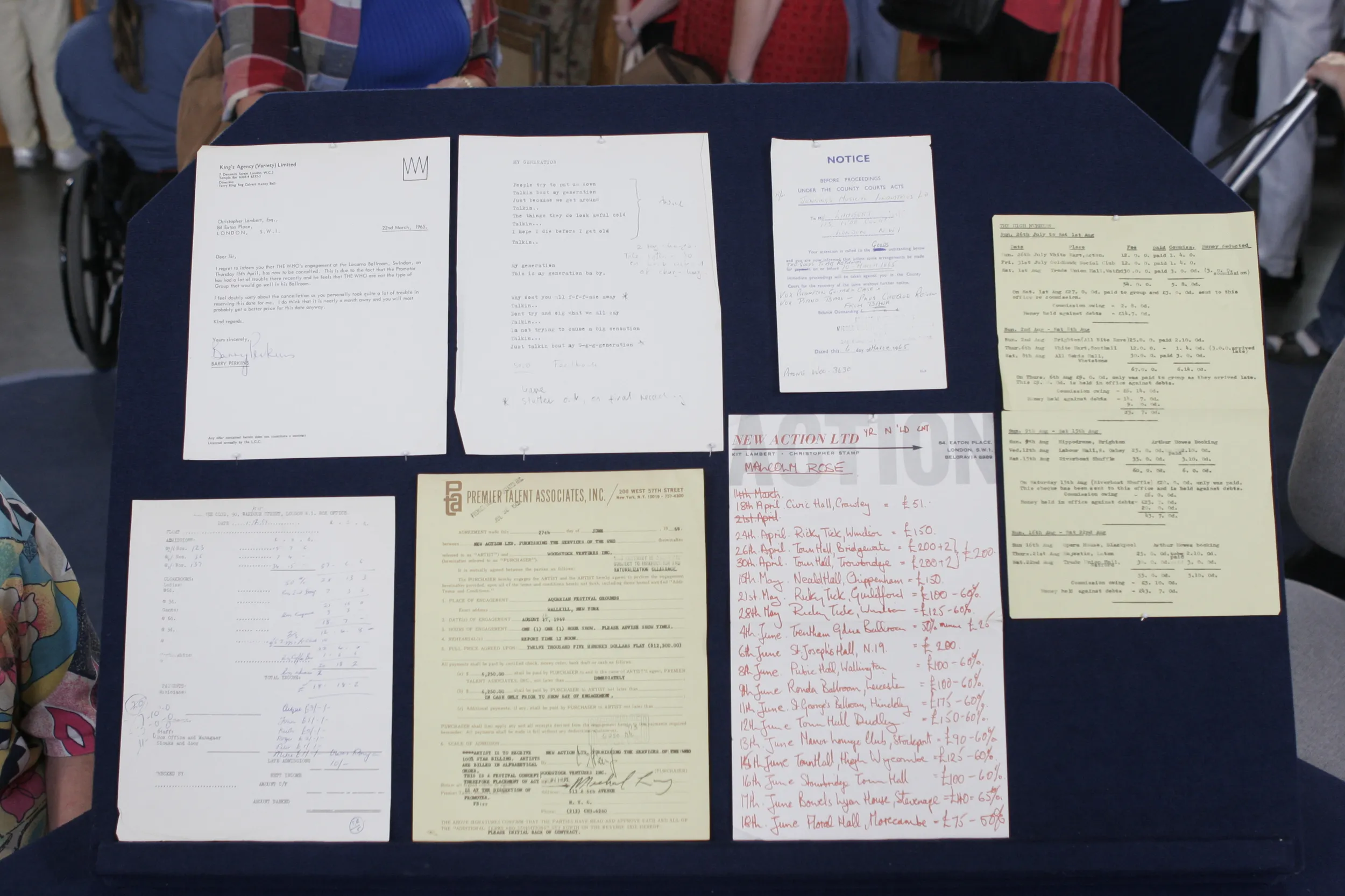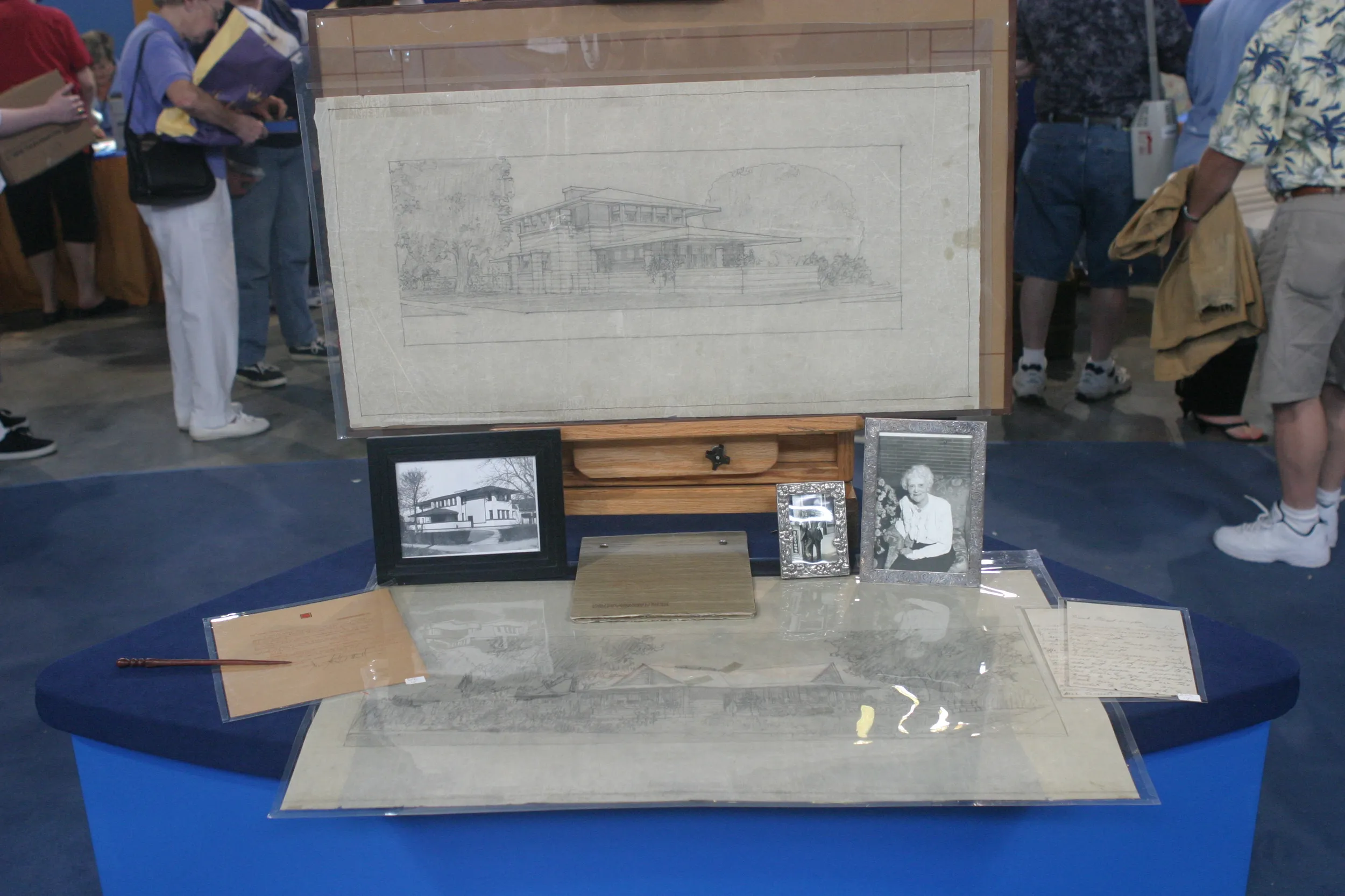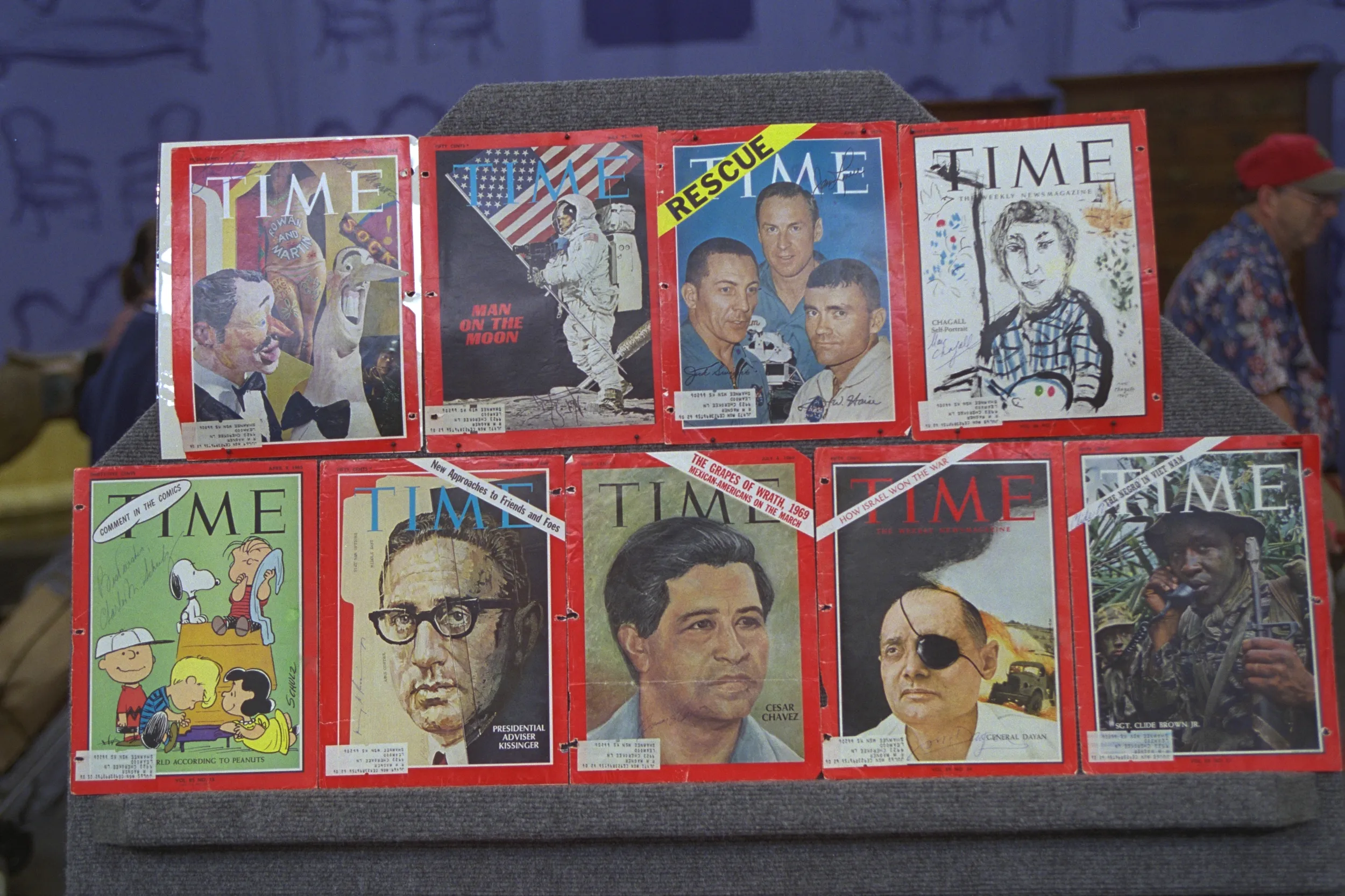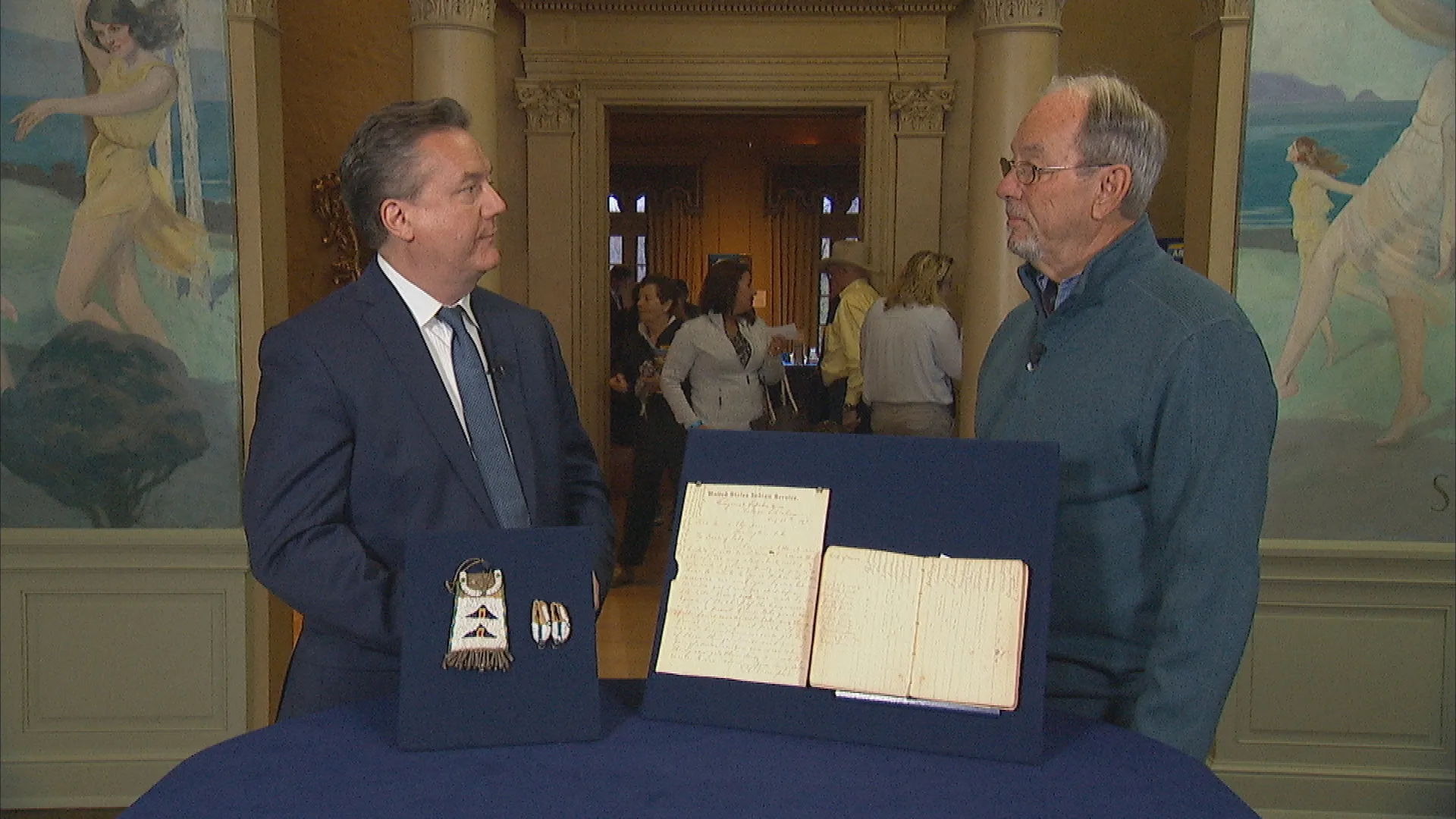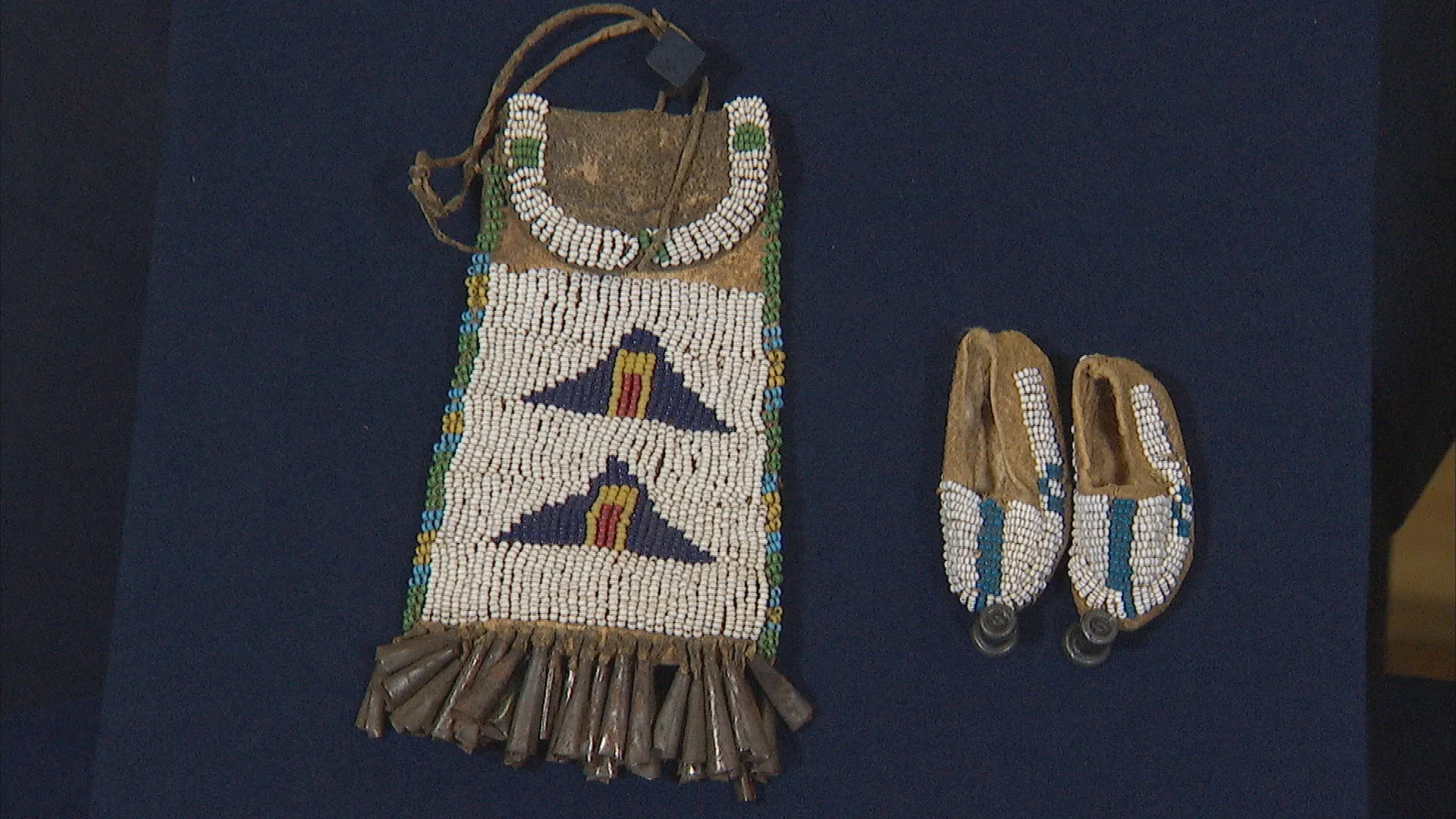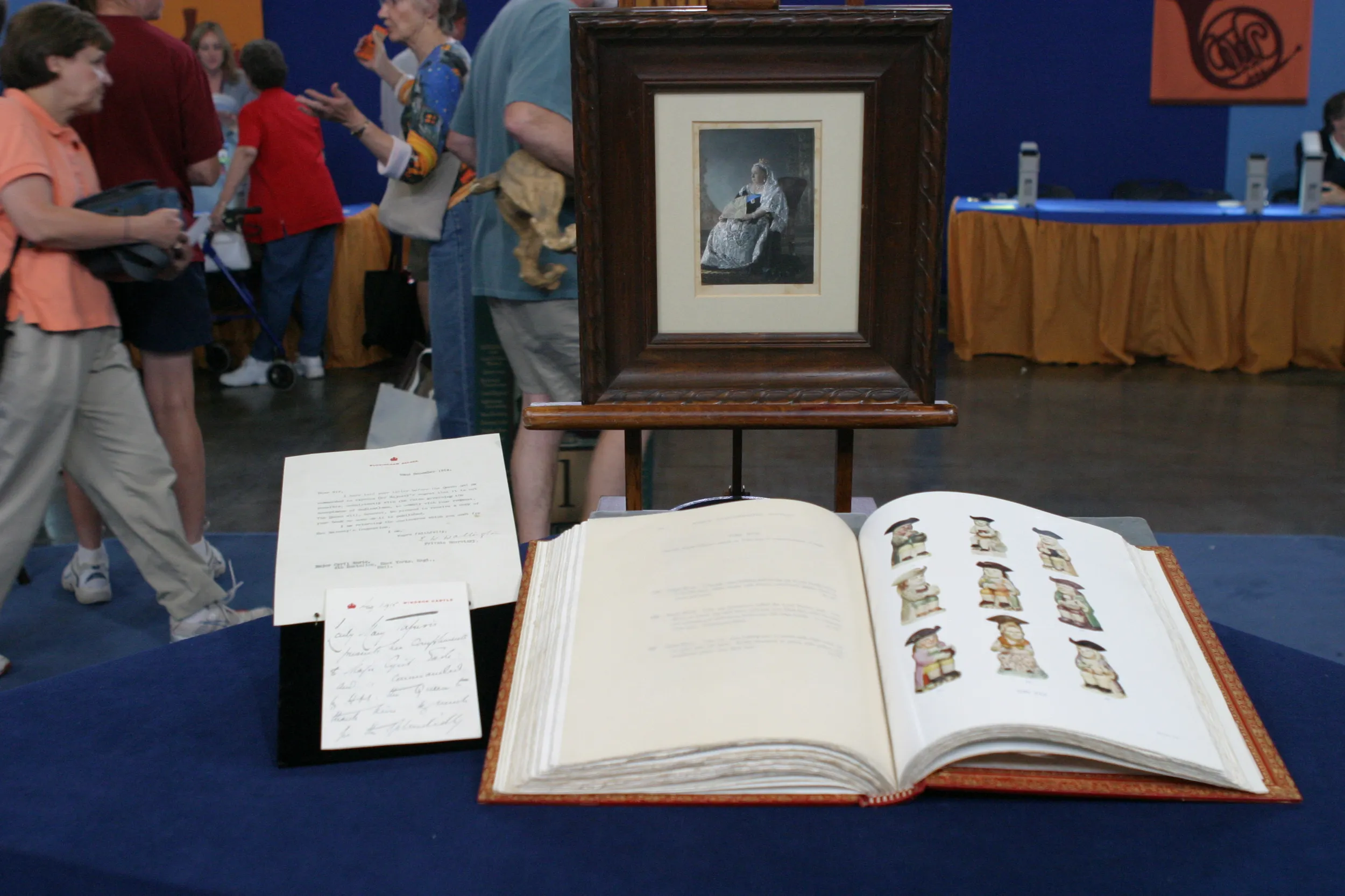GUEST: My great-grandfather worked for the U.S. government, and he worked with the Cheyenne and Arapaho tribes out in Watonga, Oklahoma, west of here. He sent a letter to my grandmother. She was about nine at the time.
APPRAISER: Mm-hmm.
GUEST: And, in the letter, it references that the wife of the Cheyenne chief had made a little paint pouch. And so, he sent the paint pouch, and then he also sent the doll moccasins. It was in the August of 1895.
APPRAISER: You also have his ledger. Can you tell me a little bit about that?
GUEST: Right, it's his logbook.
APPRAISER: Yeah.
GUEST: And, in it, he explains all of the implements that he gave for them. They were helping him with agricultural products. Also, he lists all of their names, their children.
APPRAISER: Right. Well, it's fascinating as a document because it gives us a picture of the foundation of the Cheyenne nation on the reservations at the time.
GUEST: Right.
APPRAISER: Almost all of these people in the ledger are documented in archival photographs from the time, as well.
GUEST: Okay.
APPRAISER: So, we have this really interesting, very poignant letter to his daughter, missing his family. With these sort of small, decorative objects he's sending, gives us a really interesting picture of a time when there's not a lot of archival information. These group of objects, they're probably valued modestly around $400 to $600.
GUEST: Okay.
APPRAISER: The letter, we think it would be about $1,000 to $1,500. And the ledger itself, because it's so important archivally, more like $1,500 to $2,500.
GUEST: Okay, good!
APPRAISER: So the entire collection altogether, if it's sold at auction and was offered that way, would be $3,000 to $5,000.
GUEST: Great, it's good information.
APPRAISER: So it's a fascinating group.
GUEST: It is!

